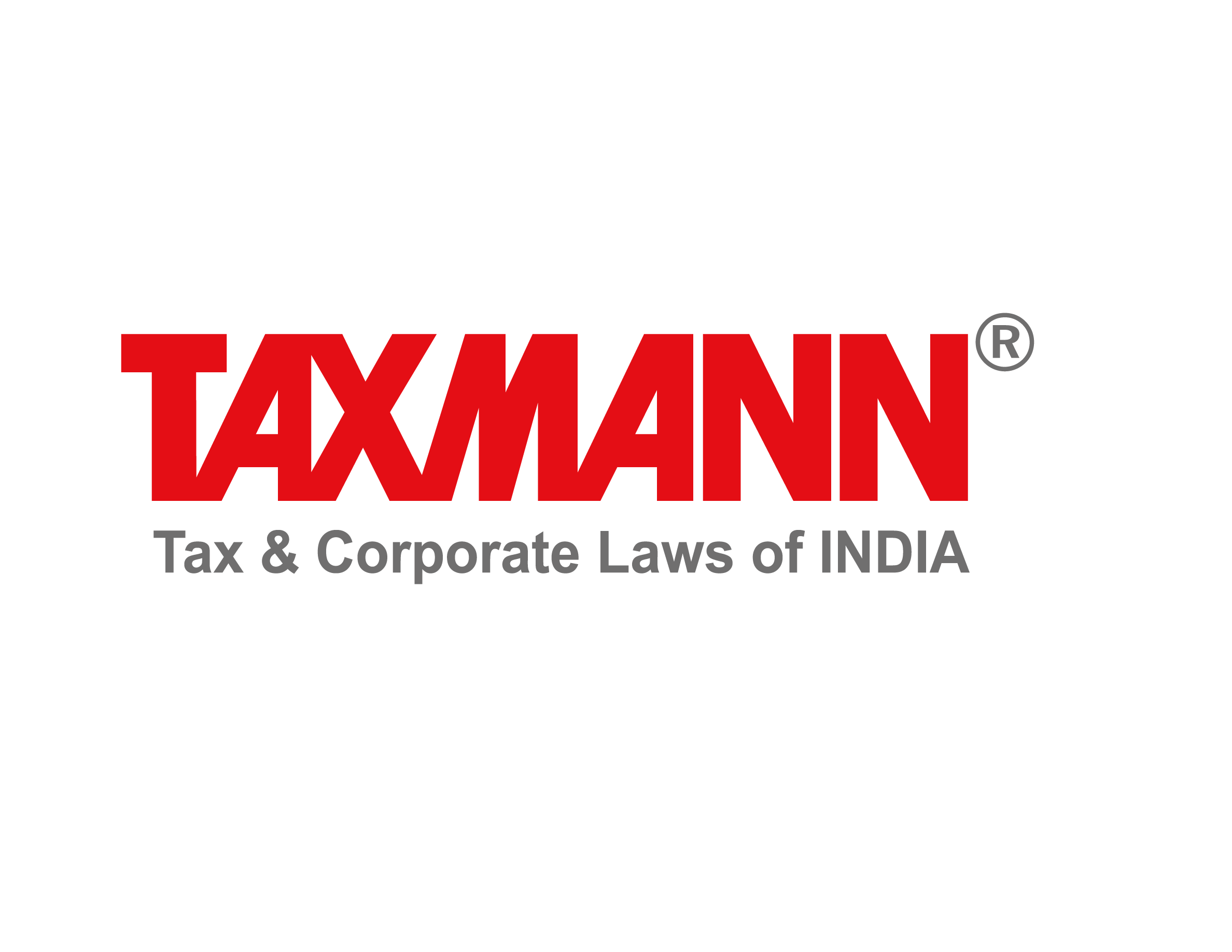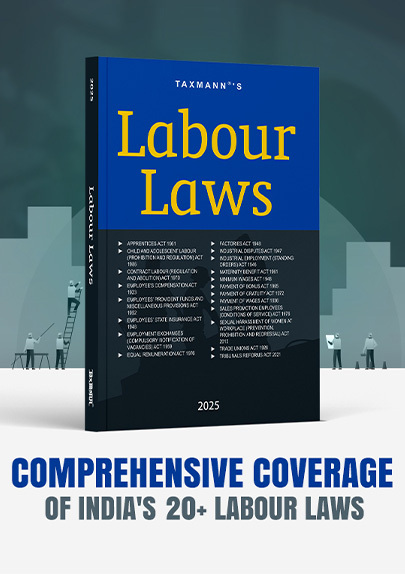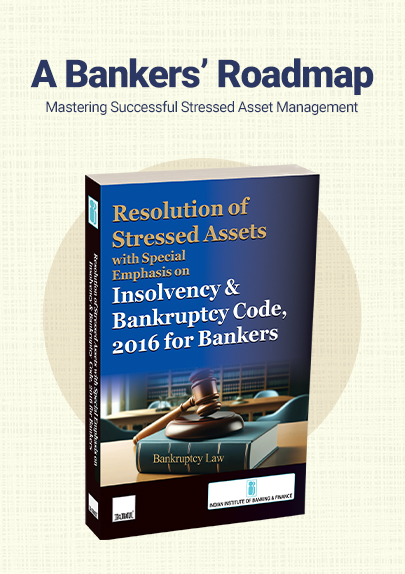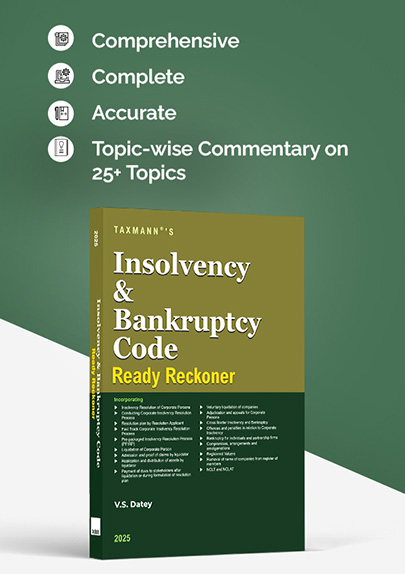Guide to Core Banking Solutions (CBS) – Overview & Concepts
- Blog|Account & Audit|
- 9 Min Read
- By Taxmann
- |
- Last Updated on 14 April, 2025
Core Banking Solutions (CBS) refer to a centralized system that enables banks to provide a unified and real-time platform for processing and managing banking transactions and services across all their branches and delivery channels. Under CBS, customer data and transactions are maintained on a centralized server, allowing customers to access banking services from any branch or channel, regardless of where their account is held.
Table of Contents
- Background
- Banking Industry & Banking Software
- Challenges
- Audit of Banks & Banking Softwares
- Core Banking Solution/System/Software (CBS)
- Centralized Banking Solution/Core Banking Solution
- Overview of Various CBS and Basic Concepts
- Introduction to TCS BaNCS
- Introduction to Oracle FlexCube
- General Concepts of CBS and of Finacle
Check out Taxmann's Audit in CBS Environment which is a comprehensive guide to auditing within technology-driven banking frameworks, focusing on Core Banking Solutions (CBS). It covers essential areas like real-time data integration, automated processes, and enhanced security/compliance measures. Developed by the Western India Regional Council of ICAI and featuring contributions from CA. Kuntal Shah, this 2025 Edition provides practical checklists, examples, and strategies tailored for chartered accountants, auditors, bankers, and compliance officers. Key topics include Finacle commands, NPA classification, foreign exchange transactions, and LFAR requirements—making it an indispensable resource for modern financial auditing.
1. Background
Over the years, the banking operations have been automized to a large extent and wide range of banking softwares have been developed for accounting of transactions and core banking operations.
Bank softwares are becoming more sophisticated day by day as new accounting methods develop and more people bank online, private banking softwares are being further enhanced to streamline the processes.
2. Banking Industry & Banking Software
2.1 Current Scenario
The face of Banking Industry is changing continuously. What Banking is today is quite different from what it was in the years gone by. Some of the present trends in banking industry include –
- Focus on Customer Relationship (Service Oriented Architecture [SOA])
- Introduction of Value Added Services
- Connectivity of branches
- Multiplicity of Delivery Channels (ATM, Cash Deposit Machines, Cheque Deposit Machine, Point of Sale Units, Credit Card, Mobile Banking, Internet Banking)
- Focus on MIS & Risk Management
- Focus on Reduction of Transaction Cost
2.2 Future Scenario
One can visualize future scenario in the industry on current trends. Going by the current happenings one can expect the future of Banking Industry –
- Increase in Customer expectations
- Intense Competition on account of new entrant
- A greater variety of Products and Delivery Channels (especially digitally distributed & managed products) in the market
- Centralized Customer Management (Service Centric Approach)
- Information Technology to act as an integrator and enabler between demands on the industry and services rendered
3. Challenges
The biggest challenge before the Banking Industry today is posed by its customers’ expectations. The customer today is more informed and aware than before. Customers demand more and more services and delivery channels.
3.1 Customers’ Expectations
- Anywhere, Anytime banking
- Diverse products and facilities
There are challenges posed by Market Forces due to stiff competition wherein the differentiator or selection of bank by the customers is based on quality of Services. However, the Service up-gradation comes with a cost for the Bank. Hence, a Tradeoff between cost of Transaction and Quality Service to Customer is the key. Moreover, due to diversified products and services, upto date information for Customer and Banker of utmost importance.
On the other end, the Regulatory requirements are increasing rapidly. Apart from handling Transactions, Customer and competition it is very important to pay equal attention to adherence to regulatory guidelines.
A composite system/software which handles Transactions, Customer Relations, Regulatory compliances, MIS/Reports request is the need of Hour. Core Banking Systems provide the solution for the same. There are various Core Banking Softwares available in the market. More prominent and used in India are –
| Software Package | Provider |
| Finacle | EdgeVerve Ltd. (Infosys) |
| FLEXCUBE | Oracle |
| TCS BaNCS | Tata Consultancy Services (TCS) |
4. Audit of Banks & Banking Softwares
Ever since the human being started documenting transactions, audit methodology and techniques have evolved over the period of time keeping pace with the style of business. With the growth in business volume and technological advances there has been paradigm shift in various aspects of business. Conducting audit of financial transactions cannot be an exception to the same. Traditional audit techniques and methodology were outcome of the volume and complexities of the business of its time. A classic example of the same is audit techniques applied for conducting audit of a bank operating under Core Banking Solutions (CBS).
As we have witnessed, during the last decade there has been large scale growth in banking services, covering more and more geographical area and large number of population. This has necessitated applying modern technology, particularly in the field of data capturing, recording and processing. Core Banking Solutions is outcome of the same.
For obvious reasons audit methodology cannot remain static, it has also to change. Therefore, with the spread of Core Banking Solutions in large number of cases, changing audit methodology also became inevitable. If the auditee’s dependence on technology hinges heavily, there is no reason why auditor should not apply the same technology.
5. Core Banking Solutions/System/Software (CBS)
5.1 What is CBS?
The core banking system is the set of basic software components that manage the services provided by a bank to its customers through its branches (branch network). The bank’s customers can make their transactions from any branch, ATM, Service Outlets, Internet, Phone at their disposal.
The Core Banking Solutions is based on Service Oriented Architecture (SOA). It helps banks to reduce risk that can result from manual data entry and out-of-date information. It also helps banks to improve Service Delivery quality and time to its customer.
The software is accessed from different branches of bank via communication lines like telephones, satellite, internet etc.
Core Banking Solutions [CBS] works on a concept of Centralized Database and Processing. Transactions take place at various geographical locations which get recorded and processed at a Centralized Server. Updation of Database is on Real Time Basis. Due to the Centralization of Transaction Processing, issue of Out of Date Information is eliminated. All the users connected to CBS will be able to get upto date information. CBS also enhances quality of Reporting and strengthens Access Control.
6. Centralized Banking Solution/Core Banking Solution
Under CBS data is stored in centralized servers at Data Centre. This effectively means that all operations at the connected branches, back offices are carried out through servers at Data Centre including transactions through other delivery channels like ATMs, Internet Banking, Phone Banking.
Under Core Banking Solutions, the branches, back offices are defined as SOL (i.e. Service Outlets) where each SOL functions as a service window. The CBS is capable of processing any transaction from any branch location connected to CBS. It can be equated with single window operations at airline counters or railway reservation counters wherein all the services can be obtained at one place. Hence, under CBS customer is now a customer of the bank and not merely a customer of a branch of the Bank. This has facilitated Anywhere, Anytime Banking convenience for the customer.
From Bank’s perspective, control over the application and processes has been entrusted at Data Center Level. In addition to it Core Banking Solutions also makes available effective MIS on real-time basis. It enables generation of all periodical returns centrally.
As mentioned above there are various CBS developed by various software companies are available in the marked however, out of the all, highly acclaimed and widely used Core Banking Softwares are –
- FINACLE by Infosys
- BaNCS by Tata Consulting Services
- FlexCube by Oracle Financial Services
For the purpose of this publication, some of the menu codes of Finacle Ver. 7 and Finacle Ver. 10 have been referred to.
7. Overview of Various CBS and Basic Concepts
7.1 Introduction to FINACLE
A Financial Package, for Banking Solution developed by Infosys on a platform of Oracle, is thus named as FINACLE. Presently, many Indian Public Sector Banks, Private Sector Banks and Foreign Banks operating in India are using this software as banking solution due to high flexibility and scalability. Finacle is an integrated, online, enterprise banking system designed to provide the “e-platform”.
Prior to 1995 it was known as BANC 2000, a Total Branch Automation package with a distributed network. After 1995 Infosys developed the same as FINACLE, a Core Banking Solution.
Functionalities
- Finacle facilitates anywhere banking.
- It is menu driven software with easy navigation.
- It is functionality rich and addresses the retail and corporate banking requirements.
- Customization and parameterization are two special features of Finacle.
- Finacle provides multi-lingual support.
- Finacle provides multi-level security i.e. operation, database and application level security.
- It supports workflow based Transaction Processing.
- It has High level of security control and audit capabilities.
- It has a common transaction interface for all type of transactions.
- It provides a browser based GUI interface to Finacle.
- SQL & PL SQL is used for generation of MIS, Reports, Queries at Centralized Level.
- Designed for optimum Usage of Network Bandwidth.
- There are two Functional Modules—
-
- Retail and Corporate Module – Encompassing Saving Accounts, Current Accounts, Term Deposits, Cash Credit Accounts, Overdraft Accounts, Term Loans, Demand Loans.
- Trade Finance Module – Encompassing Inland & Foreign Bills, Forward Contracts, Inland & Foreign Documentary Credits, Inland & Foreign Bank Guarantees, Inland & Foreign Remittances and Pre-shipment Credits.
8. Introduction to TCS BaNCS
A Financial Package, for Banking Solution offered by Tata Consulting Services. The Core Banking solution TCS BaNCS is an integrated solution that automates all aspects of core banking operations across entities, languages and currencies. BaNCS is built on open architecture, a component-based product suite to leverage service-oriented and event-driven architectures.
Functionalities
- Entire range of banking products including savings, checking, overdraft and deposit accounts.
- Entire range of lending products.
- Complement of transactional services including remittance, foreign exchange, cards and trade finance.
- Accessibility through multiple channels, including mobile banking and web.
- Full integration of front, middle, and back-office processes.
- Accurate, timely and actionable information about customer relations.
- Single view between bank and customer.
- “Anytime anywhere” banking.
9. Introduction to Oracle FlexCube
FlexCube provides a comprehensive, integrated, interoperable, and modular solution that enables banks to manage evolving customer expectations.
Functionalities
- 24/7 processing of large transaction volumes, with high availability.
- Multiple delivery channel support.
- Security management covering application and role-based access.
- Service-oriented architecture supports agile business process management.
- Componentized architecture helps build scalable and reusable solutions.
10. General Concepts of CBS and of Finacle
10.1 SOL ID & Set ID (Init. Br. ID)
SOL ID – Under Core Banking System, each Branch, Back Office, Administrative/Controlling Office are assigned a code i.e. Service Outlet ID [SOL ID]. It helps in identifying the Branch/Office under which the Account is maintained. Hence, if a branch at Delhi is assigned a SOL ID of “0089”, the accounts opened under Delhi Branch will display “0089” as SOL ID in CBS.
As discussed above under CBS any branch can initiate transaction for any of the account maintained with the bank. Hence, a distinction is required between the branch which maintains the account and the branch who initiate the transaction.
Set ID (Init. Br. ID) – Set ID or Initiating Branch ID is a SOL ID of the Branch who initiated the transaction.
E.g. – Transaction of a Cash withdrawal by a customer of Mumbai Branch (SOL ID “0044”) from Delhi Branch (SOL ID “0089”). In the instant case “0089” is Init. Br. ID and “0044” is Account SOL ID.
In order to search transactions based on the branch who initiated transactions in Finacle, SET ID (Init. Br. ID) parameter is required to be used under Menu Code “FTI”.
Tran ID, Journal No. & Date – Each transaction in Finacle will be assigned a unique Transaction ID. The Transaction ID remains unique only for the day, since, on the next day the Transaction IDs are reset.
Combination of Transaction ID and transaction date make it unique across the system. In Finacle, once the transaction is “Entered”, a Tran ID is generated. To locate any transaction from the database the user need to use Tran ID and Date at TI/TM Menu command.
Under BaNCS the transaction number is known as Journal Number.
Transaction Type & Sub-type – Transactions in Finacle are entered with the Transaction Type and Transaction Sub-type. It easier to trace set of transactions with Transaction Type & Sub-type. Codes for Transaction Type and Sub-types are prescribed differently by each bank.
E.g. – Transaction Type codes for Cash and Transfer may be of following types:
- Tran Type: Cash: “C”, Transfer: “T”
- Sub-Tran Type: CR – Cash Receipt, CP: Cash Payment
The auditor must acquaint himself with the Transaction Types used by each bank. It helps auditors to design query (search parameters) for inquiry of financial transactions.
Customer Master Level Configurations/Parameterizations – Under CBS, the customer is identified by a number generally called CUST ID/CIF No. Following are the advantages of separate configuration for Customer and Accounts of Customer –
- Identification of unique customers.
- Data redundancy can be reduced by eliminating the process of updating repetitive details about customer at each time of opening of Account.
- It is easier to comply with Customer centric Regulations. E.g. TDS provisions under Income Tax Act (where payment to customer is important than payment for an account), IRAC Guidelines (where classification of account is Borrower-wise and not Account-wise)
- Multiple accounts of the customer can be mapped to a customer for better identification.
Under the Customer Master Level configuration basic details about the customer are updated. Details include Name, Date of Birth, PA Number etc.
Once the CUST ID/CIF is opened, various accounts can be opened under the said CUST ID/CIF. Relationship between CUST ID/CIF No. and Account is that of Parent and Child wherein the Account Master inherits the information and parameter values from Customer Master.
In Finacle 7 menu command CUMM/CUMI is used for inquiry on CUST ID/CIF No. Under BaNCS the customer master details can be reviewed through “Customer Master Details” module.
Disclaimer: The content/information published on the website is only for general information of the user and shall not be construed as legal advice. While the Taxmann has exercised reasonable efforts to ensure the veracity of information/content published, Taxmann shall be under no liability in any manner whatsoever for incorrect information, if any.

Taxmann Publications has a dedicated in-house Research & Editorial Team. This team consists of a team of Chartered Accountants, Company Secretaries, and Lawyers. This team works under the guidance and supervision of editor-in-chief Mr Rakesh Bhargava.
The Research and Editorial Team is responsible for developing reliable and accurate content for the readers. The team follows the six-sigma approach to achieve the benchmark of zero error in its publications and research platforms. The team ensures that the following publication guidelines are thoroughly followed while developing the content:
- The statutory material is obtained only from the authorized and reliable sources
- All the latest developments in the judicial and legislative fields are covered
- Prepare the analytical write-ups on current, controversial, and important issues to help the readers to understand the concept and its implications
- Every content published by Taxmann is complete, accurate and lucid
- All evidence-based statements are supported with proper reference to Section, Circular No., Notification No. or citations
- The golden rules of grammar, style and consistency are thoroughly followed
- Font and size that’s easy to read and remain consistent across all imprint and digital publications are applied






 CA | CS | CMA
CA | CS | CMA


